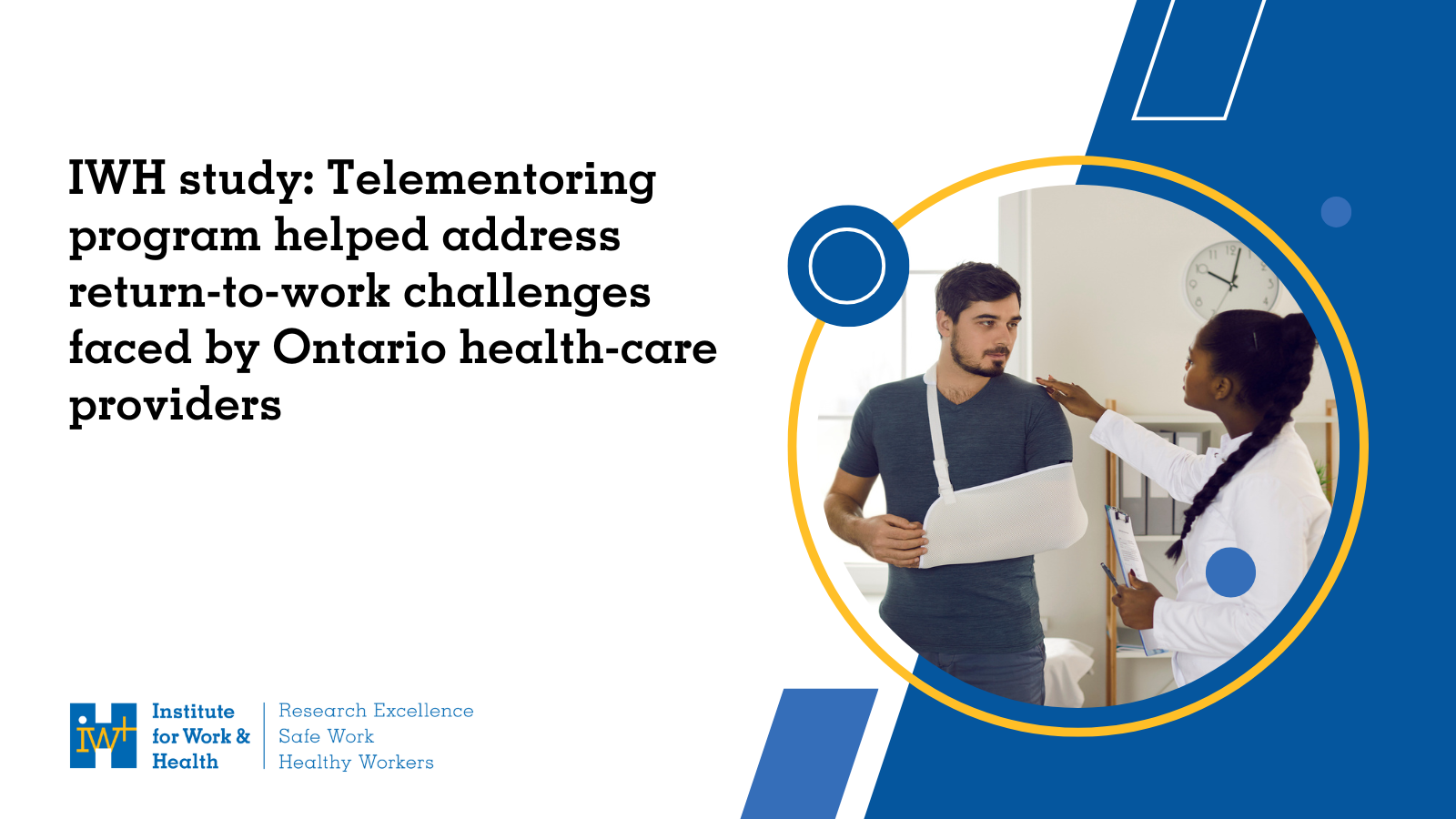Why was this study done?
Primary care providers are integral in supporting workers to stay at or return to work following an occupational injury or illness. They play a key role in communicating with workers’ compensation boards about a workers’ condition and what tasks they can do or should avoid doing at work. But many lack training around the return-to-work (RTW) process. This study set out to understand whether a collaborative medical education and telementoring program, the Extension for Community Health-care Outcomes training program for Occupational and Environmental Medicine (ECHO OEM), helped build health-care providers’ capacity to help workers stay at work and/or return to work in a safe and healthy manner.
How was the study done?
Project ECHO is a model first designed by a physician at the University of New Mexico to support health-care providers in remote and under-resourced communities. In the fall of 2021, the first ECHO program focused on occupational and environmental medicine (OEM) was created at the Institute for Work & Health. The program consisted of 12 weekly virtual sessions, each of which included a short lecture by a content expert and a case presentation of an unidentified patient by a participant. Program participants included family doctors, nurse practitioners, allied health professionals (such as chiropractors, occupational therapists, physiotherapists, psychologists) and occupational health practitioners (such as disability management and health and safety professionals). Content experts involved in the program included professionals with expertise in occupational medicine, occupational hygiene, environmental health, health and safety, disability management and workers’ compensation.
This study was based on focus groups and interviews with about 30 participants. About half were held in June and July 2021, before the launch of ECHO OEM, and half were held with ECHO OEM attendees at the end of the first two 12-session cycles.
The pre-launch focus groups and interviews were aimed at identifying the needs of the health-care providers in the management of patients with injuries and illnesses related to work and in the interactions regarding patient care with the Workplace Safety and Insurance Board (WSIB), Ontario’s workers’ compensation board. The post-cycle focus groups and interviews were focused on participants’ satisfaction with the program, their ability to apply concepts learned and their perception of program impact on collaboration with others in the RTW process.
What did the researchers find?
In the pre-program needs assessment, care providers reported challenges stemming from communication issues and the complexity of having multiple parties involved in the return-to-work process.
Health-care providers noted that communication issues with compensation boards can add to their workload and delay treatment. Participants noted that the timeline for a compensation claim to be accepted by the WSIB can be unpredictable, with further delays when providers do not know what paperwork is required or cannot obtain the needed medical documentation from the compensation board. They also reported difficulties getting assessments of a worker’s limitations approved by the compensation board, which can make it difficult to identify accommodations that could help that worker return to work.
Providers said that it is important for them to have consistent communication with a worker’s employer to align a treatment plan with workplace expectations. However, they noted complexities such as different RTW rules and processes across different employers and unions. They also reported a common knowledge gap between providers and employers on a worker’s ability to work after an injury.
In the post-program evaluation, the research team heard positive feedback, with participants saying they improved their knowledge about return to work and occupational health and safety legislation. Some participants picked up communication strategies for working with compensation boards. Others noted learning new approaches for assessing workers’ limitations. Participants also learned about assessment tools for depression and anxiety, which helped them refer patients for timely mental health care; however, they noted that specialized support for post-traumatic stress disorder was difficult to find.
Participants also had suggestions of areas they wanted to learn more about, including more nuanced approaches for working with compensation boards, the management of comorbid physical and mental health conditions and treatment guidelines for specific practices or occupational groups.

What are the implications of the study?
This study identified the challenges Ontario care providers face in supporting injured or ill workers to return to work, highlighting the importance of communication and collaboration in the return-to-work process. It shows that ECHO OEM sessions addressed many of these challenges and improved health-care providers’ knowledge about return to work. It also identified areas that need further attention, such as navigating compensation board procedures and supporting workers with comorbid conditions and mental health concerns.
What are some strengths and weaknesses of the study?
The use of both focus groups and interviews allowed for insights to come from both group discussions about shared experiences, as well as in-depth perspectives on an individual’s challenges and experiences. This combination of information allowed the researchers to more fully understand ECHO OEM’s impact.
A limitation of this study was that health-care providers from rural or remote areas were underrepresented, with all but seven of the participants coming from suburban or urban areas. This may limit the understanding of providers’ experiences in these underserved areas that may benefit from the ECHO OEM program.